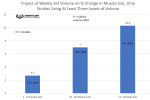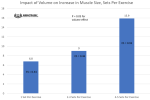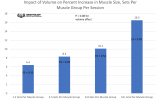NWlifter
Active Member
Given that I have pretty much reached my genetic potential, and also leaning out from a Keto/Carnivore approach, it’s really hard to tell if it makes any difference with the lower frequency - but I can definitely say that it takes up to 48hrs just to recover my strength for some exercises (validated through conservative 1RM testing and handgrip dynamometer), and another 24-48hrs to supercompensate strength.
This was also the case when measuring thousands of subjects in Wayne Westcott’s lab, the more advanced and the older the lifter, the more recovery tended to require up to 72-96hrs (for some even longer, but I will assume this is due to an exaggerated inflammatory response):
https://www.15minutecorporatewarrior.com/podcast/dr-wayne-westcott/
Not that strength is a reliable marker for hypertrophy, but given that we do want to load the tissue with progressively heavier loads it only makes sense to wait until strength is up instead of just maintaining.
There is also the subjective benefit of better recovery, although there is sometimes a slight increase of soreness after workouts, but only in some muscle groups.
Good thoughts, good post! Strength recovery, and just recovery is really important IMO too.
I read this after my post above and looks like your post is saying similar to my thoughts too, that's what I've seen too with myself and my own recovery. If I train 3x per week per muscle, it ends up being 3 small 'bouts' anyway, so I'm sure the overall long term stimulus comes out about the same as lesser often bigger bouts. ( I know in the past when I've compared it it has anyway).
Plus that other thought I've posted a couple times on here (and even once to Kreiger on FB) and cannot get anyone to 'bite' and think about it......
(I'll post it one more time here...)
We know an SD makes muscle tissue more sensitive to stimulation.
There is even a study showing how mTOR gets blunted with regular training. That study showed that about 12 days off, reset mTOR and re-sensitized it either fully or almost fully.
OK, since that seems to be so, that means, when those subjects took 12 days off, there was some kind of ramp of sensitivity slowly increasing with each day off. So THAT means, if you train on Monday for example, take Tuesday off, a little sensitivity was restored, if you wait another day, a little more was restored, another day off, even more, etc. That might be why and how 1x per week can be so close to 3x per week, your getting a 'mini SD' between each workout, mTOR would be much more sensitive and maybe respond a lot more to a training bout. I think this might be pretty important in the frequency/stimulation area.



